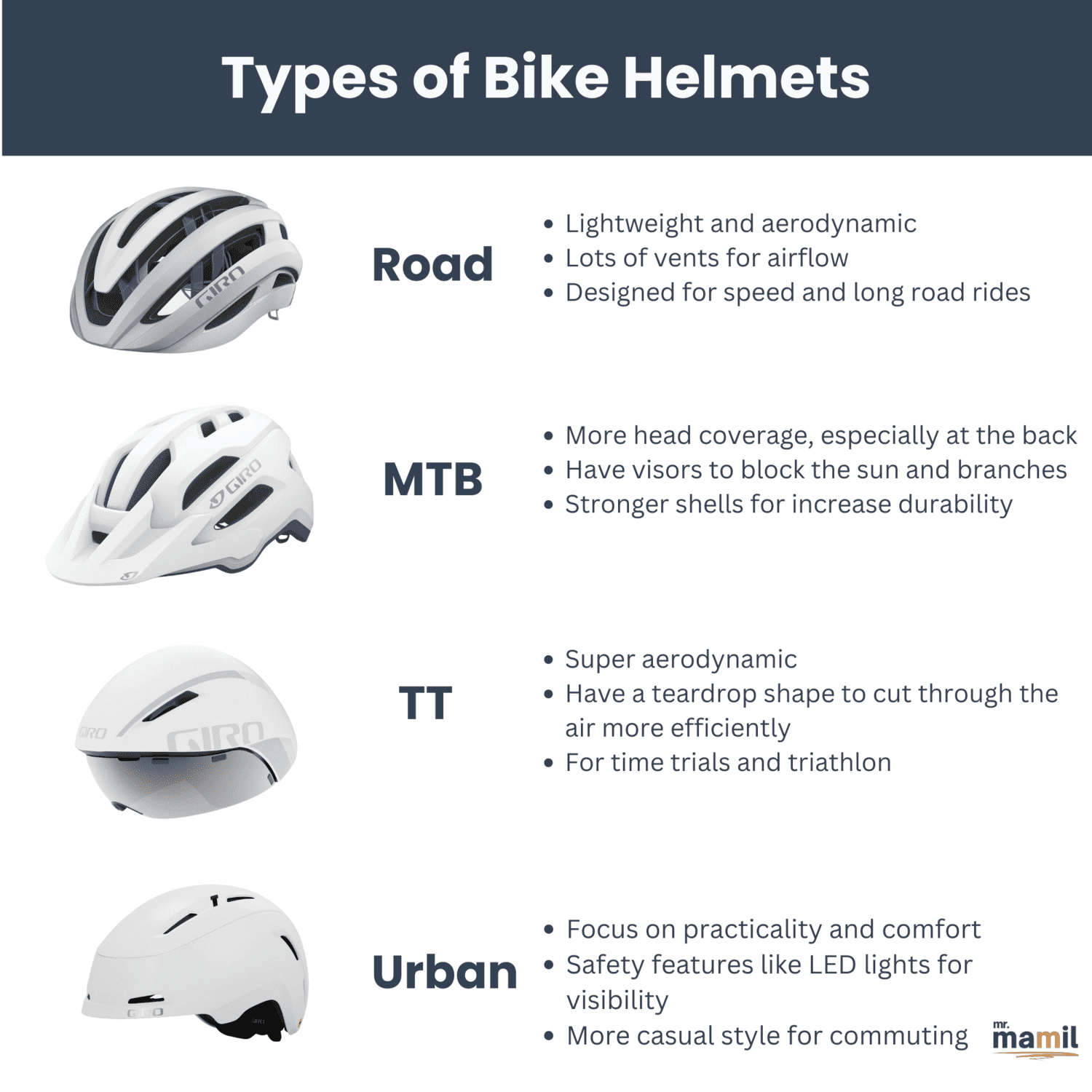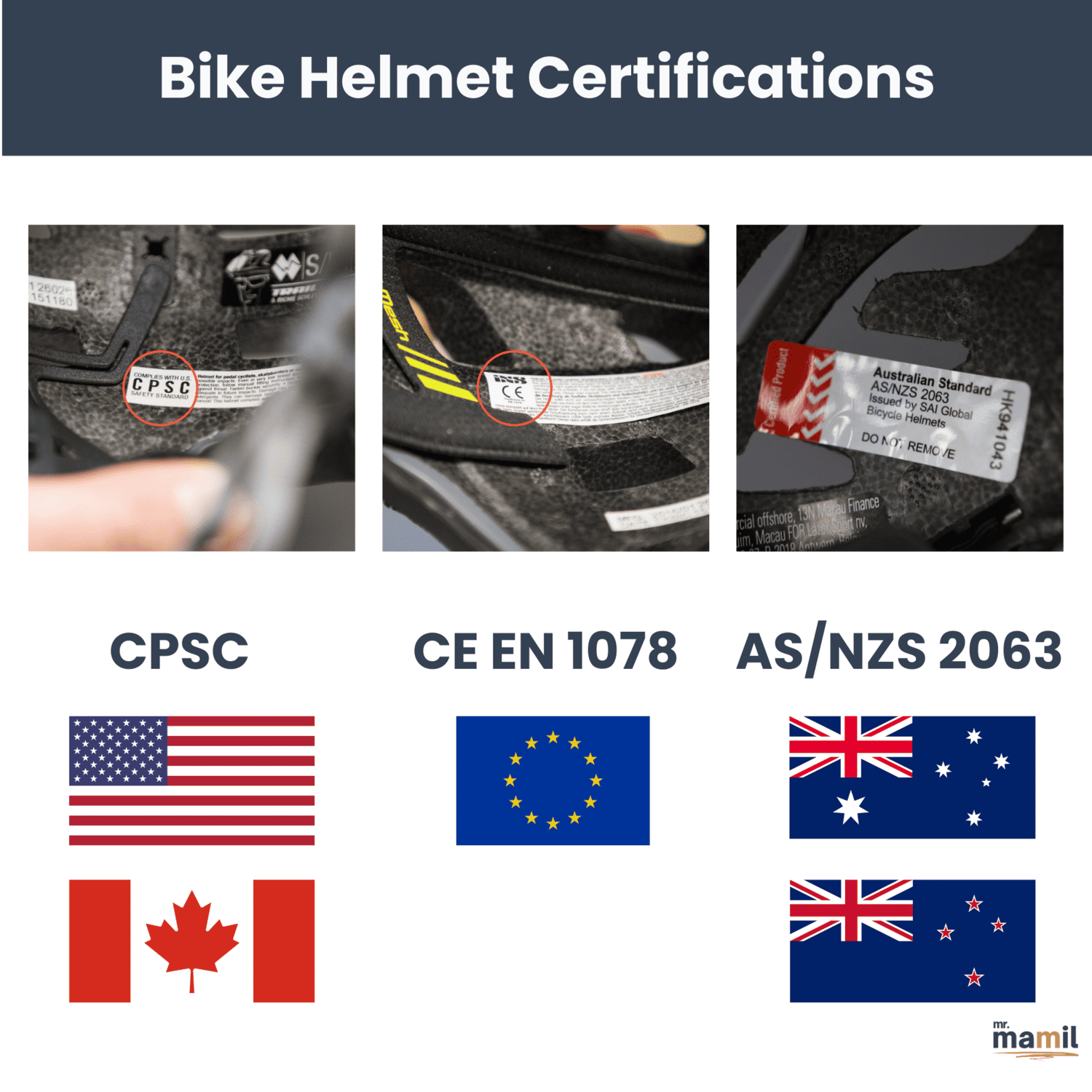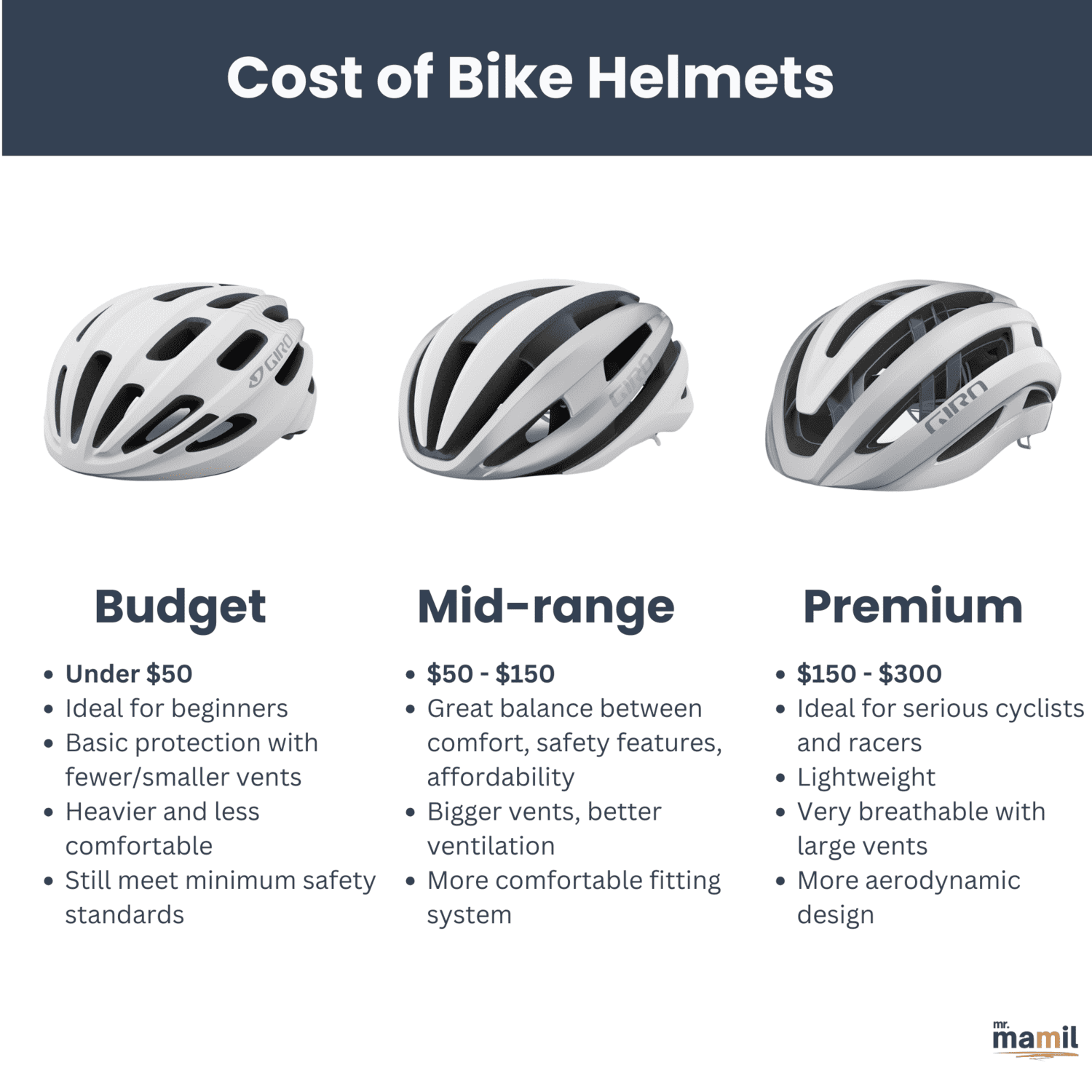Wearing a bike helmet serves a critical purpose: to protect your head and brain in the event of a fall or collision. The head and brain are highly susceptible to injury when cycling and the consequences of a head injury can be severe and long-lasting. Here’s why a bike helmet is essential:
- Impact protection. The outer shell is made from tough plastics and is designed to withstand impact. It spreads the force over a broader area, reducing the stress at any one point upon collision.
- Shock absorption. Beneath the outer shell is usually a layer of expanded polystyrene foam, similar to what’s found in packaging materials. This foam compresses upon impact, absorbing the energy that would otherwise be transmitted to your skull and brain.
- Brain safety. The brain is a delicate organ floating in fluid within the skull. A sudden stop or hit to the head can cause the brain to move violently within the skull, resulting in bruising, tearing of fibers, and even more severe brain injury. Helmets are designed to reduce the acceleration of the brain within the skull, lessening the potential damage.
- Prevent skull fractures by absorbing the brunt of the force; it can prevent or reduce the severity of a skull fracture.
- Legal compliance. In many jurisdictions, wearing a bike helmet is not just a safety measure; it’s the law, particularly for children and adolescents.
While a helmet does not guarantee complete protection, it significantly reduces the overall risk of head injury. It’s an essential part of every cyclist’s risk management strategy.
Are there specific helmets for different types of cycling?

Yes, there are specific helmets designed for different types of cycling, each with features suited to the particular demands and risks of that style of riding. Here’s a rundown of the common bike helmets;
- Road cycling helmets are lightweight and aerodynamic, with lots of vents for airflow. They’re designed for speed and long rides, where keeping cool and minimizing drag is important.
- Mountain biking helmets have more head coverage, especially at the back, because mountain biking has a higher risk of falls. They often have visors to block the sun and branches, and some have stronger shells for rough terrain.
- Commuting helmets focus on practicality and comfort, with features like LED lights for visibility and a more casual style.
- Time trial helmets are super aerodynamic and often have a teardrop shape to cut through the air more efficiently. These are for races against the clock, where every second counts.
More reading
What safety certifications should I look for in a helmet?

When you’re picking out a bike helmet, it’s important to check for safety certifications. These certifications mean the helmet has been tested and meets specific safety standards. Here’s what to look for;
- United States. CPSC (Consumer Product Safety Commission) sticker. This means the helmet meets the standards the CPSC sets for safety, a legal requirement for all helmets sold in the U.S.
- Europe. CE EN 1078 label. Helmets sold in Europe must meet the standards set out in the EN 1078 certification. It’s a European standard that ensures a minimum level of protection.
- Canada. CSA (Canadian Standards Association) label. While not all helmets in Canada will have this, it’s a good sign of safety compliance. Otherwise, ensure it meets CPSC standards widely recognized in Canada.
- Australia/New Zealand. AS/NZS 2063 standard. Helmets in Australia and New Zealand must comply with these local standards to be considered safe.
Other countries usually have either CPSC or CE certifications on the helmets sold.
What features are important in a cycling helmet?
From our experience, here are our top three, main features to pay attention to.
- Fit and comfort. Make sure the helmet fits your head snugly. Most helmets come in various sizes, and many have adjustable straps or a dial at the back to get just the right fit. Everyone’s head is slightly different, so try on different brands because they often have slightly different.
- Safety technology. MIPS (Multi-directional Impact Protection System). This is the most popular safety feature in many helmets today. It allows the outer shell to rotate slightly upon impact and can reduce the amount of rotational force transferred to your brain, reducing the risk of injury. Others include SPIN or Koyord.
- Certifications. Look for certifications like CPSC, CE EN 1078, or AS/NZS 2063. These indicate the helmet has passed safety tests.
Remember, the most important thing is that the helmet fits well and meets safety standards. All the other features are bonuses that can enhance your cycling experience. Don’t compromise on fit and safety for style or extra gadgets.
Protection is the top priority.
More reading
How much should I spend on a cycling helmet?

The amount you should spend on a cycling helmet depends on your budget and how you plan to use it. Generally, more expensive helmets offer enhanced comfort, style, and in some cases, improved safety features. Here’s a breakdown of what you might expect across different price ranges (in USD),
- Budget (under $50). Basic protection with fewer vents and simpler adjustment systems. They still meet minimum safety standards but might be heavier and less comfortable. Best for casual riders, beginners, or those who cycle infrequently.
- Mid-range ($50 to $150). Better ventilation and more comfortable fitting systems often include rotational impact protection technology like MIPS. They are lighter than budget models and may offer more style choices. Best for regular cyclists, those doing longer rides, or those who want a balance between solid safety features and affordability.
- Premium range ($150 to $300+). Top-of-the-line materials, lightest weight, best ventilation systems, safety features like MIPS or similar technologies, and often aerodynamic designs for racing. Come with the latest technology and design aesthetics. Ideal for serious cyclists, racers, or those who want the highest level of protection and comfort.
Remember, a higher price doesn’t always mean better protection. All helmets sold by reputable retailers must meet standard safety certifications. What you’re paying for in higher-end models is often enhanced comfort, reduced weight, and advanced features.
Is it legally required to wear a cycling helmet?
The laws regarding the requirement to wear a cycling helmet vary greatly depending on the country and, in some cases, specific areas within those countries. Here’s a breakdown by region,
- United States. There are no federal laws mandating the use of bike helmets. Helmet laws are determined at the state or local level. Many states have laws requiring minors to wear helmets, but it’s less common for adults. Some cities have their own rules that require all cyclists to wear helmets.
- United Kingdom has no law that compels cyclists of any age to wear helmets when riding. However, the Highway Code suggests that cyclists should wear a helmet for safety, and various safety campaigns and organizations strongly recommend it.
- Canada. Provinces and territories set helmet laws. Some require everyone to wear a helmet, while others only mandate it for riders under a certain age, typically under 18. For example, British Columbia requires all cyclists to wear helmets, whereas Ontario only requires it for individuals under 18.
- Australia and New Zealand are known for having strict helmet laws. Cyclists of all ages must wear a helmet when riding a bicycle on public roads. This is enforced across all states and territories, and failure to comply can result in fines.
- Europe. In Europe, there’s no uniform law that covers all countries. Helmet laws vary widely.
- In Spain, helmets are mandatory for cyclists riding outside urban areas, except when going uphill or in extreme heat.
- In Finland and Malta, helmets are mandatory for all.
- In the Czech Republic, only children under 15 must wear them.
- Other countries like the Netherlands and Denmark, known for their high cycling usage, have no mandatory helmet laws.
It’s important that you check the specific laws in your area, as regulations can change and may not be the same everywhere within a country.